Mongolia Exploration: A Journey to Hustai National Park
Located near Ulaanbaatar, Mongolia, Hustai National Park is a sanctuary for the iconic Przewalski's horse and a diverse range of wildlife. This park preserves a vast steppe ecosystem and embodies Mongolia's rich nomadic heritage. Visitors can enjoy wildlife sightings, scenic hikes, and a profound connection with nature, making Hustai an essential destination for nature lovers and cultural explorers alike.
Mongolia
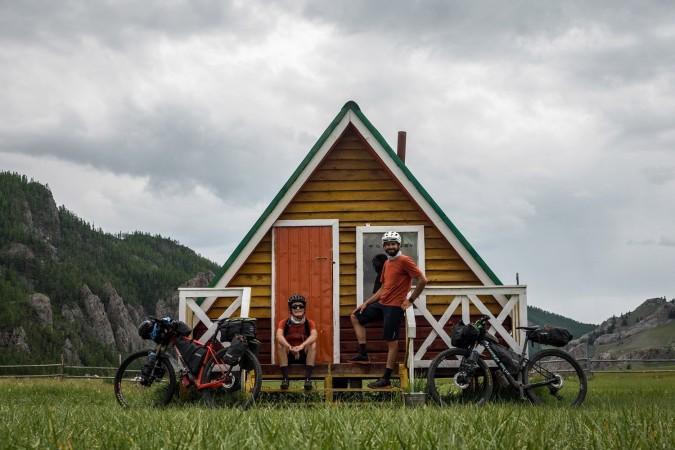
Foundation of Hustai National Park
Hustai National Park, established in 1993, represents a pivotal moment in the conservation of Mongolia's unique steppe ecosystem and its inhabitants. The park is particularly notable for its role in the reintroduction of the Przewalski's horse, a species that had become extinct in the wild by the 1960s due to hunting and habitat loss as stated in National Geographic’s document on this horse species. Through international collaboration, these horses were successfully bred in captivity and reintroduced to Hustai. This initiative has been a resounding success, with the horse population growing sustainably and thriving in their natural habitat.
Today, Hustai National Park spans approximately 50,000 hectares (500 square kilometers) and serves as a global model for conservation efforts. It supports a rich biodiversity, including numerous species of mammals, birds, and plants, symbolizing Mongolia's commitment to preserving its natural heritage. The park’s management encourages scientific research, sustainable tourism, and community involvement, ensuring that its benefits extend beyond conservation to cultural and economic enrichment for local communities.
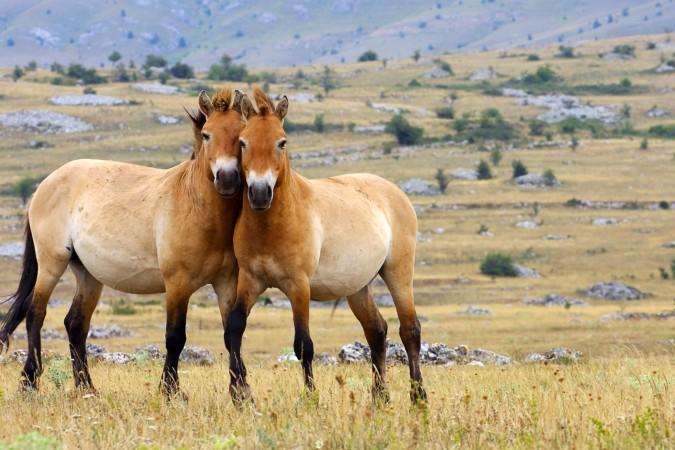
Hustai National Park - © gather
Untamed Wildlife in Hustai National Park
Hustai National Park is renowned for its thriving population of Przewalski's horses, the only truly wild horses in the world. Beyond these iconic equines, the park is a biodiversity hotspot, hosting a wide range of species adapted to its harsh yet picturesque steppe environment. Among the notable inhabitants are the red deer and roe deer, which graze the grasslands, and the elusive grey wolf, which roams the area in search of prey. Smaller mammals, such as the red fox, corsac fox, and Siberian marmot, also inhabit the park, contributing to its rich ecological tapestry.
Bird watchers will find Hustai a paradise, with over 200 bird species recorded, including the majestic cinereous vulture and the powerful steppe eagle. These birds of prey soar above the landscape, maintaining the ecological balance and providing breathtaking spectacles for visitors. The park’s flora is equally remarkable, dominated by grasses that sustain the large herbivore population. Shrubs and small trees pepper the landscape, providing essential cover and food for various species. This diversity supports local food chains and represents a crucial aspect of Mongolian natural heritage, attracting researchers and conservationists dedicated to understanding and preserving these ecosystems.
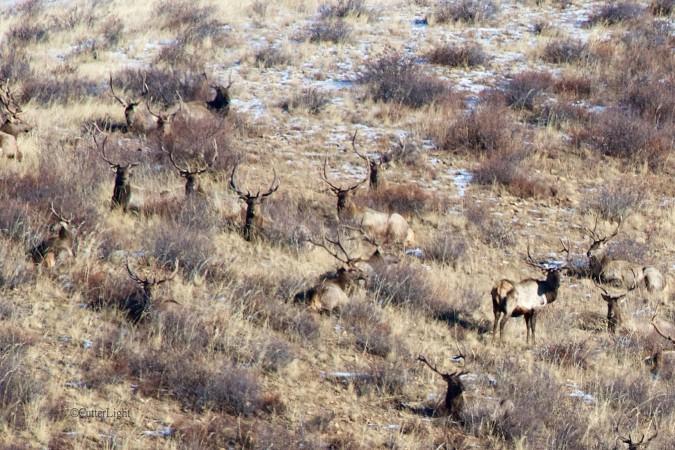
Red deer Hustai National Park - © CutterLight
Activities in Hustai National Park
Hustai National Park offers a variety of activities that allow visitors to immerse themselves in its natural beauty and observe its wildlife responsibly. These family-friendly activities cater to a wide range of interests and fitness levels, promoting engaging yet respectful interactions with the park’s natural environment.
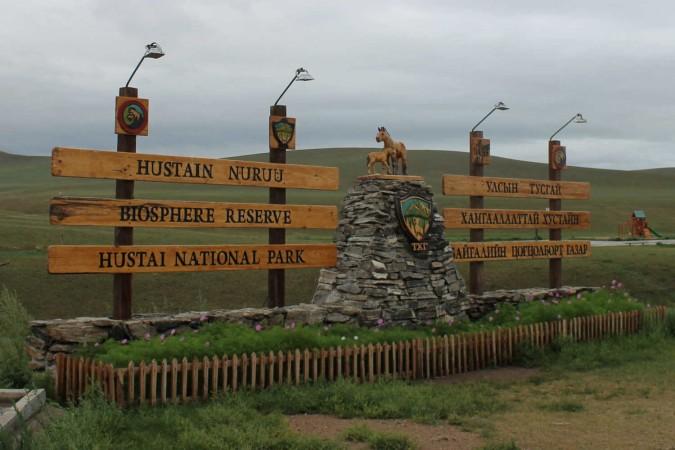
Activities in Hustai National Park - © Jenny Sandiford
Wildlife Observation
Designated viewing areas allow for respectful observation of Takhi horses and other wildlife, with early morning or late afternoon being the best times for these activities. These periods of the day, when the animals are most active, offer the most rewarding sightings and photo opportunities.
Hiking
A network of trails offers everything from short walks to rigorous hikes, allowing visitors to explore diverse landscapes at their own pace. These trails lead through open steppes, wooded areas, and hilltops with panoramic views, providing an intimate experience of the park's natural beauty. Whether you are a seasoned hiker or just looking for a leisurely stroll, the trails at Hustai cater to all levels of adventurers.
Wildlife Photography
The park’s rich wildlife and stunning landscapes make it a paradise for photographers. Whether capturing the dynamic interplay of light and shadow across the steppes or the graceful movements of a Przewalski's horse, photographers will find endless inspiration in Hustai. The park’s management encourages responsible photography practices to ensure minimal disturbance to the wildlife.
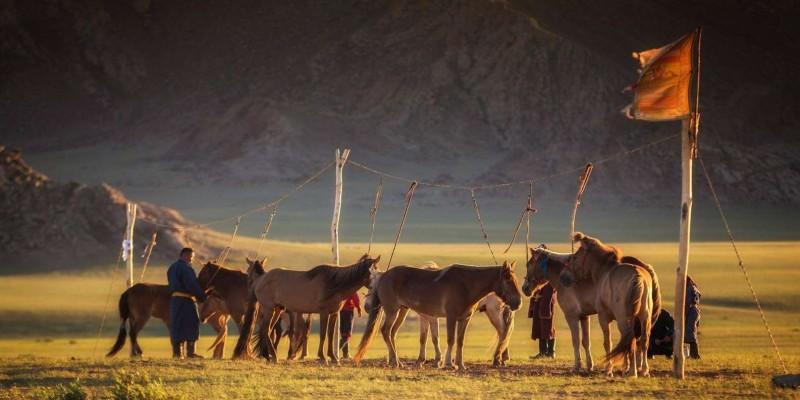
Wildlife Photography - © gather
Horse Riding
Experience the mastery of Mongolian horseback riding, with traditional ger accommodations adding to the authentic experience. Riding through the park on horseback not only offers a unique perspective on the landscape but also connects visitors to Mongolia’s deep equestrian traditions. Spending a night in a traditional ger, a felt tent used by nomads, provides a glimpse into the nomadic lifestyle that has shaped Mongolia's culture for centuries. Hustai's conservation initiatives are active and multifaceted. According to Hustai National Park Trust (a non-profit, self-fund and non-governmental conservative organization), the Government of Netherlands funded Hustai and Mongolian authorities to sustain eco-tourism during 1992-2012 period which result in the increase in number of many animals and also their habitats.
Cultural Heritage and Sustainable Tourism
Hustai National Park is more than a natural reserve; it is a living museum of Mongolian heritage. The park embodies the nomadic traditions of Mongolia, with the Przewalski's horse central to these cultural narratives. Horses have been integral to Mongolian lifestyle, symbolism, and economy for centuries, making Hustai a vital link to understanding this deep relationship.
Hustai's conservation initiatives are multifaceted, involving international collaboration and local community engagement. Educational programs raise awareness about biodiversity and sustainable practices, while tourism revenues are reinvested into the park's conservation projects. Through these efforts, Hustai National Park preserves Mongolia’s natural and cultural heritage and demonstrates how conservation can align with community development and scientific research.
One of the most significant achievements has been the successful reintroduction and ongoing protection of the Przewalski's horse, serving as a global model for species reintroduction programs. The park also engages local communities and visitors in its conservation efforts. Educational programs raise awareness about the importance of biodiversity and the need for sustainable practices. Additionally, tourism revenues are reinvested into the park's conservation projects, ensuring that visiting Hustai contributes directly to its preservation.
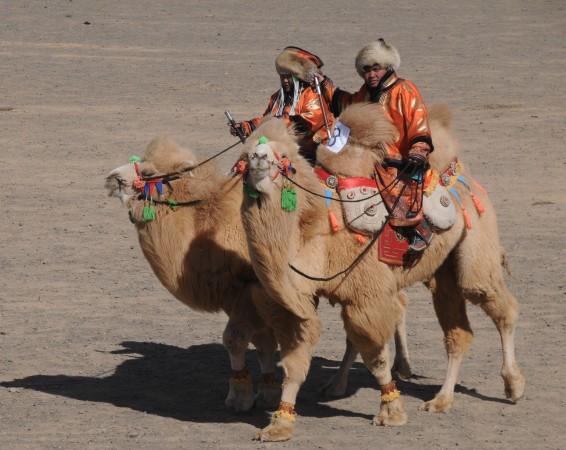
Sustainable Tourism in Hustai National Park - © gather
Planning Your Visit to Hustai National Park
Best Times to Visit: The ideal times to explore Hustai are late spring through early fall (May to September), when the weather is most favorable. This period offers optimal wildlife viewing opportunities, especially at dawn and dusk when animals are most active. The vibrant colors of the landscape during these months, combined with the pleasant climate, make for an unforgettable experience.
>>>While you're still in Mongolia: Discover The Beauty Of Mongolia: A Journey To Khuvsgul Lake
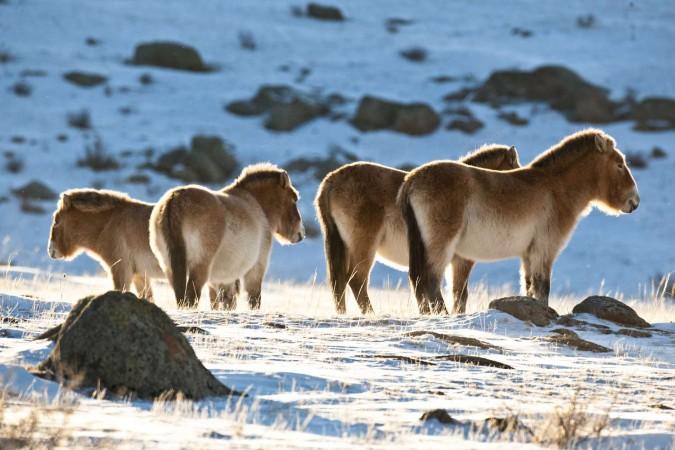
Wild life in Hustai National Park - © gather
Essential Preparations
Visitors should come equipped for the outdoors. Durable hiking boots, layered clothing, and weather-appropriate gear are essential. Binoculars enhance wildlife observation, and a good camera is a must for photographers. Packing a map and some basic first aid supplies can also be wise, ensuring a safe and enjoyable visit.
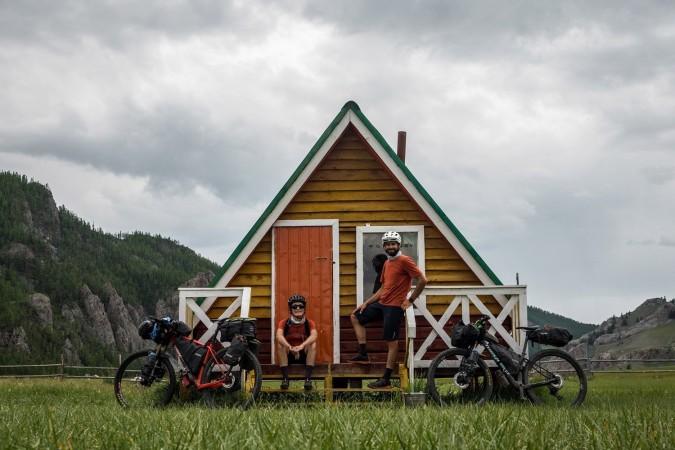
Essential Preparations before visit - © gather
Accommodations
There are several options for staying near Hustai. The park itself offers ger camps, providing an authentic Mongolian experience. These traditional felt tents are comfortable and situated to minimize environmental impact. Nearby towns also offer hotels and guesthouses for varying budgets. For a more immersive experience, consider staying in one of the park’s eco-friendly lodges, which offer amenities that blend comfort with sustainability.
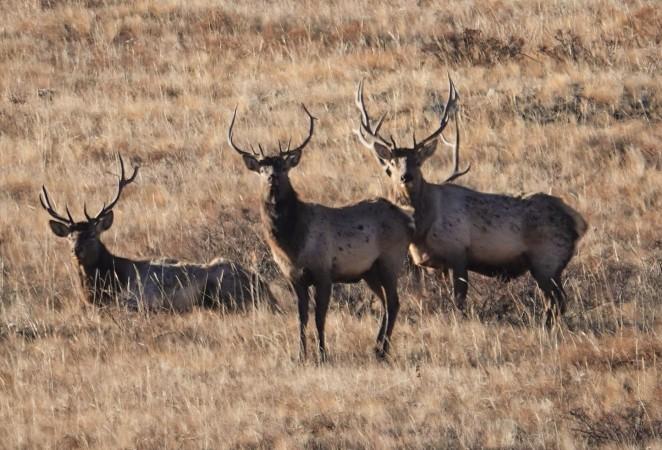
Wild life in Hustai National Park - © gather
Transportation
The park is accessible by road from Ulaanbaatar, with the journey taking approximately two hours. Hiring a local guide or joining a tour can enrich your visit, offering insights into both the natural environment and cultural heritage. Local guides can provide detailed explanations of the park’s ecology and the history of the Przewalski's horse, enhancing your overall understanding and appreciation of the area.
Travel Tips
- Respect Wildlife: Always observe animals from a safe distance. Avoid feeding or attempting to touch the wildlife to preserve natural behaviors and ensure your safety.
- Follow Trails: Stick to marked trails while hiking. This helps protect the fragile steppe ecosystem and ensures you don’t get lost in the vast park.
- Pack Essentials: Bring water, sunscreen, a hat, and layers of clothing. The weather can change quickly, and being prepared will make your visit more comfortable.
- Keep It Clean: Leave no trace. Dispose of all waste properly or take it with you when you leave to help maintain the park's cleanliness and protect its inhabitants.
- Use Local Guides: Journey with your guide will not only enhance your understanding of the area but also support the local economy. Guides can provide deeper insights into the park’s history and ecology.
- Check Park Rules: Familiarize yourself with park regulations before your visit. This includes checking if there are any specific restrictions on photography or areas that require special permits.
- Plan Your Visit Timing: Aim for early morning or late afternoon for wildlife sightings, as animals are more active during cooler parts of the day.
- Secure Accommodations Early: Book your stay in advance, especially during peak travel seasons. Ger camps in the park can fill up quickly, and securing a spot early ensures you have a place to rest after a day of exploration.
- Prepare for Remote Connectivity: Mobile service can be limited in the park. Download maps and important information beforehand. Inform someone of your travel plans and expected return time for safety.
- Capture Responsibly: When photographing wildlife and landscapes, be mindful of your surroundings. Avoid using flashes, which can disturb animals, and always prioritize the environment over getting the perfect shot.
Conclusion
Hustai National Park epitomizes Mongolia's commitment to preserving its natural wonders and rich cultural heritage. From the successful reintroduction of the Przewalski's horse to its diverse wildlife and stunning landscapes, Hustai offers a unique and immersive experience for nature enthusiasts and cultural explorers alike.
Visitors can engage in activities such as hiking, horseback riding, wildlife photography, and guided tours, all while experiencing the traditional nomadic lifestyle of Mongolia. The park's emphasis on conservation, sustainable tourism, and community involvement makes it a model for environmental stewardship worldwide.
Articles for you

Experience Aboard The RV Indochine II - A Mekong Cruise With Tweet World Travel
The RV Indochine II is a luxury river cruise ship, offering an unforgettable journey through many attractions along the Mekong River. Built in 2017, this upscale vessel combines colonial elegance with modern conveniences to create a comfortable yet stylish environment for its crew and passengers. The ship’s intimate size makes it ideal for those seeking a more personal cruising experience while exploring Vietnam and Cambodia rich culture, scenery, and heritage. Whether you're gazing at the landscape from your private balcony or enjoying authentic local cuisine, RV Indochine II promises an exotic adventure like no other.

Witness Stilt Fishing In Sri Lanka: An Eco-Tourism Experience
Sri Lanka, renowned for its stunning beaches and rich cultural heritage, harbors a unique tradition that has captivated travelers for centuries: stilt fishing. This ancient practice, passed down through generations of coastal communities, blends artistry with necessity, offering a glimpse into a way of life intimately connected to the island's coastal rhythms. Stilt fishing in Sri Lanka isn't merely a means to catch fish; it's a cultural emblem, embodying the resilience and ingenuity of Sri Lanka's fishing communities.

Make Your Trip Stress-Free With The Tweet Trip App
Embark on your next adventure with confidence by downloading the Tweet Trip App, available for both iOS and Android. This essential travel companion allows you to view your detailed itinerary, stay connected with your tour guide and fellow travelers, receive real-time updates, and provide feedback effortlessly. With features like in-app messaging, emergency assistance, and location sharing, the Tweet Trip App ensures you travel smarter, stay connected, and enjoy a seamless, worry-free journey. Get started today and make the most of your travel experience with Tweet World Travel.

Pedal Through Paradise: Unveiling Cambodia's Hidden Gems on Two Wheels
The gentle whir of bicycle wheels mingles with the distant chants of monks as you glide past emerald rice paddies stretching to the horizon. This is Cambodia - a sensory explosion waiting to be experienced on two wheels. At Tweet Tours, we believe there's no better way to immerse yourself in the Kingdom of Wonder than by bicycle.
Cambodia isn't just a destination; it's a living, breathing tapestry of ancient wonders, natural beauty, and vibrant culture. Our carefully crafted cycling tours take you beyond the typical tourist haunts, offering a unique perspective on this captivating country. Ready to clip in and discover the magic of Cambodia? Let's ride!

Trekking in the Himalayas: A Journey Through Nepal's Majestic Peaks
The Himalayas rise from the earth like colossal guardians, their snow-capped peaks piercing the sky in a display of nature's raw power and beauty. Nepal, nestled at the heart of this mountain range, serves as the gateway to some of the most breathtaking trekking experiences on the planet. Here, the air is crisp and thin, filled with the promise of adventure and the whispers of ancient tales.
With Tweet Tours, as you set foot on these hallowed trails, you're not just a traveler - you're a modern-day explorer, following in the footsteps of legendary mountaineers and age-old traders. Each step takes you further into a world where nature reigns supreme and human resilience is tested against the backdrop of some of the world's highest peaks.
From the moment your boots touch the ground in Kathmandu, you'll feel the pull of the mountains. The bustling streets of the capital, with their sensory overload of sights, sounds, and smells, soon give way to serene mountain paths where the only soundtrack is the crunch of gravel underfoot and the distant tinkling of yak bells.

Exploring Mui Ne's Wonders: Unique Attractions & Local Dishes
Nestled along the southeastern coast of Vietnam, Mui Ne emerges as a captivating gem, blending natural wonders with cultural richness. Renowned for its stunning landscapes and unique attractions, Mui Ne beckons travelers seeking both relaxation and adventure in equal measure. Mui Ne's renowned beach dunes, bustling fishing towns, and excellent local food await exploration at every turn.
The allure of Mui Ne lies not only in its pristine beaches and crystal-clear waters but also in its diverse range of activities catering to every traveler's whims. Whether you're drawn to thrilling water sports like kitesurfing and windsurfing on its dynamic shores or seeking tranquility amidst the picturesque Fairy Stream, Mui Ne promises an unforgettable journey filled with discovery.
